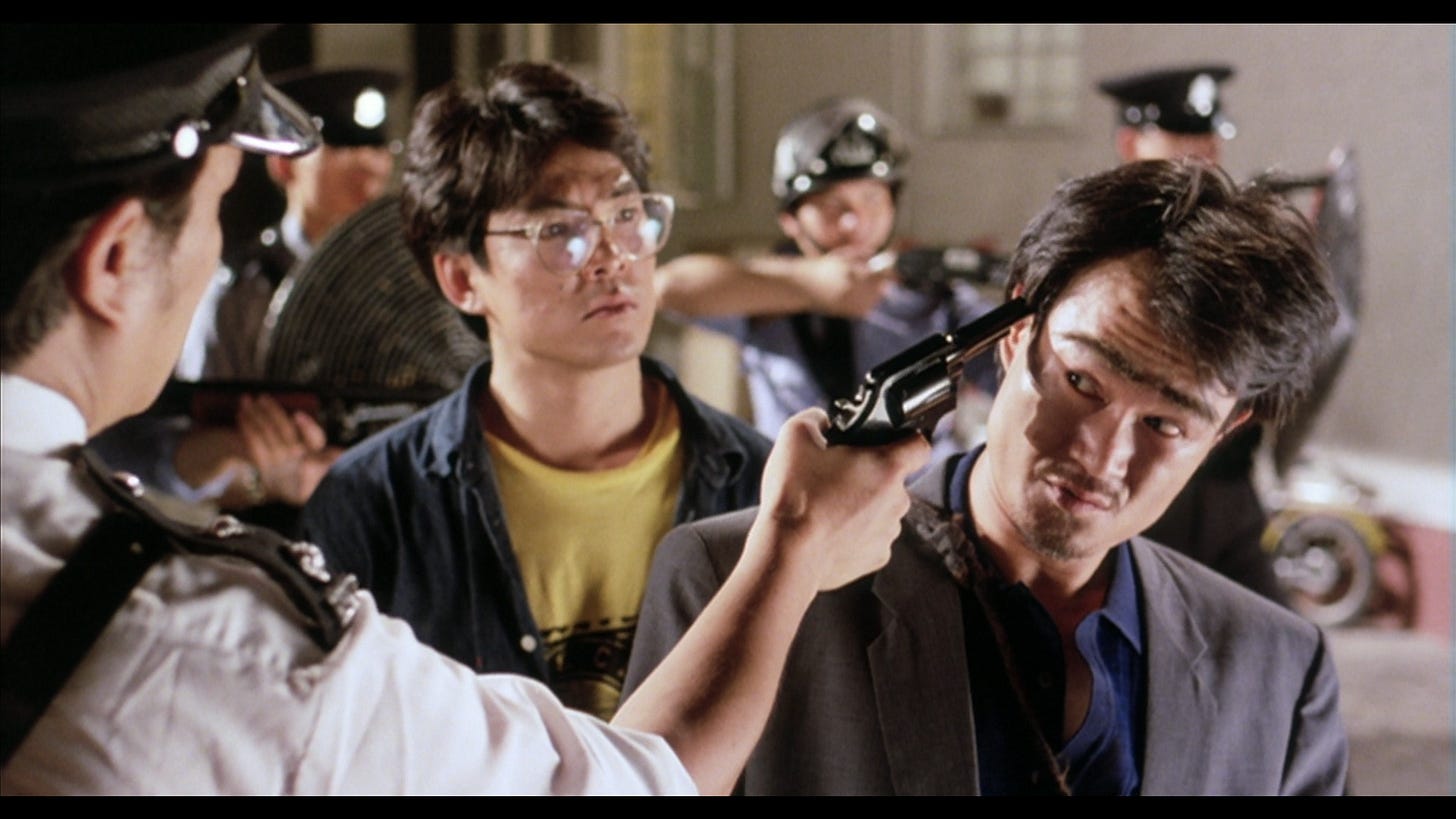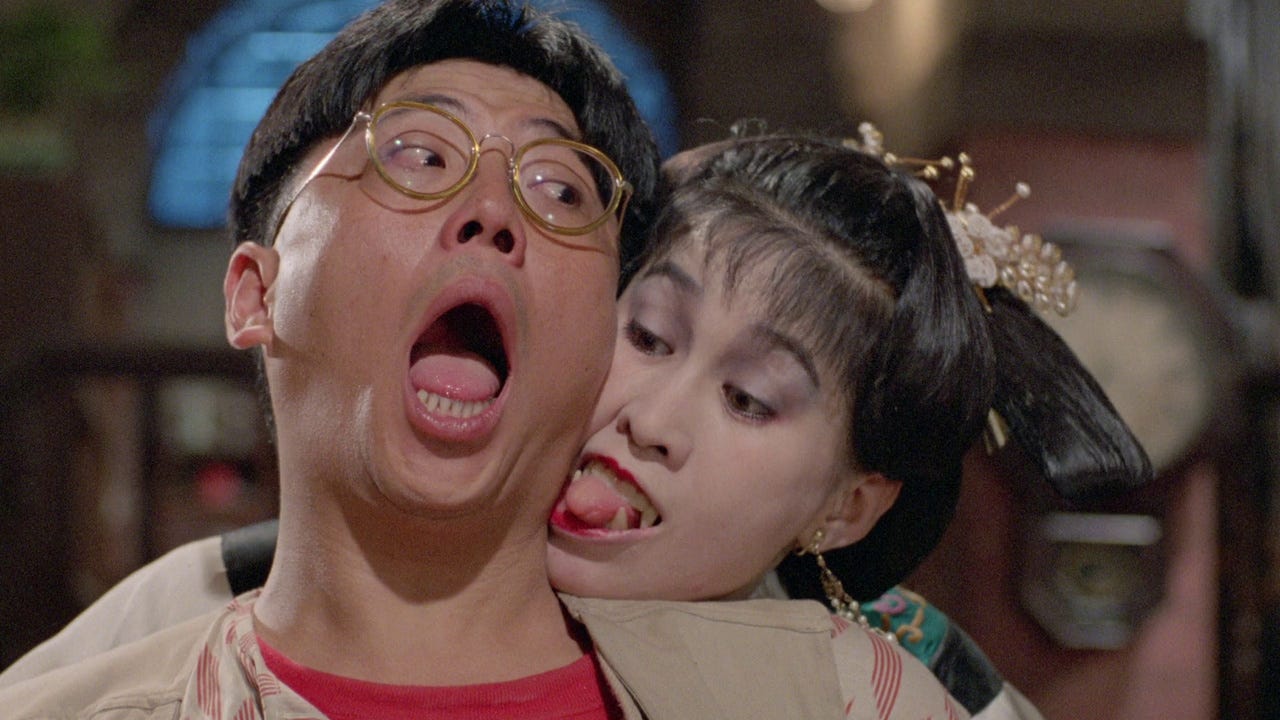For the last few years, I have used October to give myself a viewing assignment: a different horror film each day. Now that I have escaped the real life horror of New Zealand’s public service, I intend to write a piece inspired by each film.
My sixth film is Ricky Lau’s Mr. Vampire II / 殭屍家族 (1986).
The jiāngshī (literally ‘stiff corpse’) is one of the most iconic figures in Hong Kong cinema. It has existed in Chinese folklore since at least the Qing Dynasty but its profile increased astronomically in 1980 with Encounters of the Spooky Kind, written, directed and acted by Sammo Hung (one of the greatest to ever do it). This film combined Hung’s penchant for impeccably choreographed martial arts comedy with the supernatural figure. Its incredible success inspired decades worth of jiāngshī films, a large number of which were grouped (either officially or unofficially) in the Mr. Vampire franchise.
Despite the English-language title, it’d be a stretch to conflate the jiāngshī with the vampire completely. Most cultures have traditions of human corpses reawakening and there is no reason to think the Qing Dynasty legend was influenced by contact with the West. The use of the word ‘vampire’ is primarily a branding tool in to market the films to English-speaking audiences. A similar oversimplification happens in films about the Malay Pontianak, an undead figure that is often referred to as a ‘vampire’ in subtitles.
The jiāngshī is completely its own thing, independent from the western vampire and even going toe-to-toe with an undead European coloniser in 1989’s Vampire vs Vampire. Jiāngshī hop around with outstretched limbs (due to rigor mortis), they tend to be dressed in Qing-era garb (although the films are often set in the Republican period) and they can be stopped with Taoist rituals, especially with a yellow talisman to their forehead.
Beyond this, the lore is flexible and usually depends on what is going to work best for a given set piece or gag. There are jiāngshī films set throughout Chinese history and as far afield as the Kalahari Desert (the series eventually crosses over with The Gods Must Be Crazy ). One common element is the always welcome presence of Lam Ching-Ying as an irrepressible, monobrowed Taoist priest and the only man competent enough to rein in the undead menace.

For such a goofy subgenre, these films usually look great. The Hong Kong film industry was such a well-oiled machine at the time that even the lesser entries have a baseline quality to their martial arts choreography and period detail. I’m looking forward to checking out a handful I’ve never seen this month.
Unlike its Republican-era predecessor, Mr. Vampire II is set in 1980s Hong Kong. It begins with a trio of grave robbers plundering a Qing-era archeological site (it could have been called Mr. Mummy). They inadvertantly acquire a trio of jiāngshī (mum, dad and undead little boy) and chaos ensues. The young jiāngshī escapes and befriends two young children of while various authorities (cops, firemen, coroners, museums, anti-trafficking personnel) jostle for custody of the corpses. Naturally, there is only one man in Hong Kong who can put an end to the terror.
The move to a contemporary setting allows director Ricky Lau to bring in other influences, namely Steven Spielberg. Following an inciting incident straight out of Raiders of the Lost Ark, the film focuses on a pair of latchkey kids with a put-upon single father who protect a supernatural figure from untrustworthy authorities (the kids mistake him for an illegal immigrant).

Playful anti-colonial politics might be more at the forefront of films like Vampire vs Vampire, but they’re present here. The whole premise involves modern Hong Kong trying to supress its history. There’s no white people in the film but the authority figures are aligned with the UK (a cop even exclaims “God save the Queen” when he thinks he’s going to be hit by a truck). Thankfully there is one person sufficiently in touch with pre-colonial history to rise to the occasion.
The greatest success of this film though, like the whole subgenre, is how fun it is. Lau never misses the opportunity for a creative fight scene (the highlight here being a slow-motion set piece where both living and undead have inhaled sedative) and I absolutely loved it.



